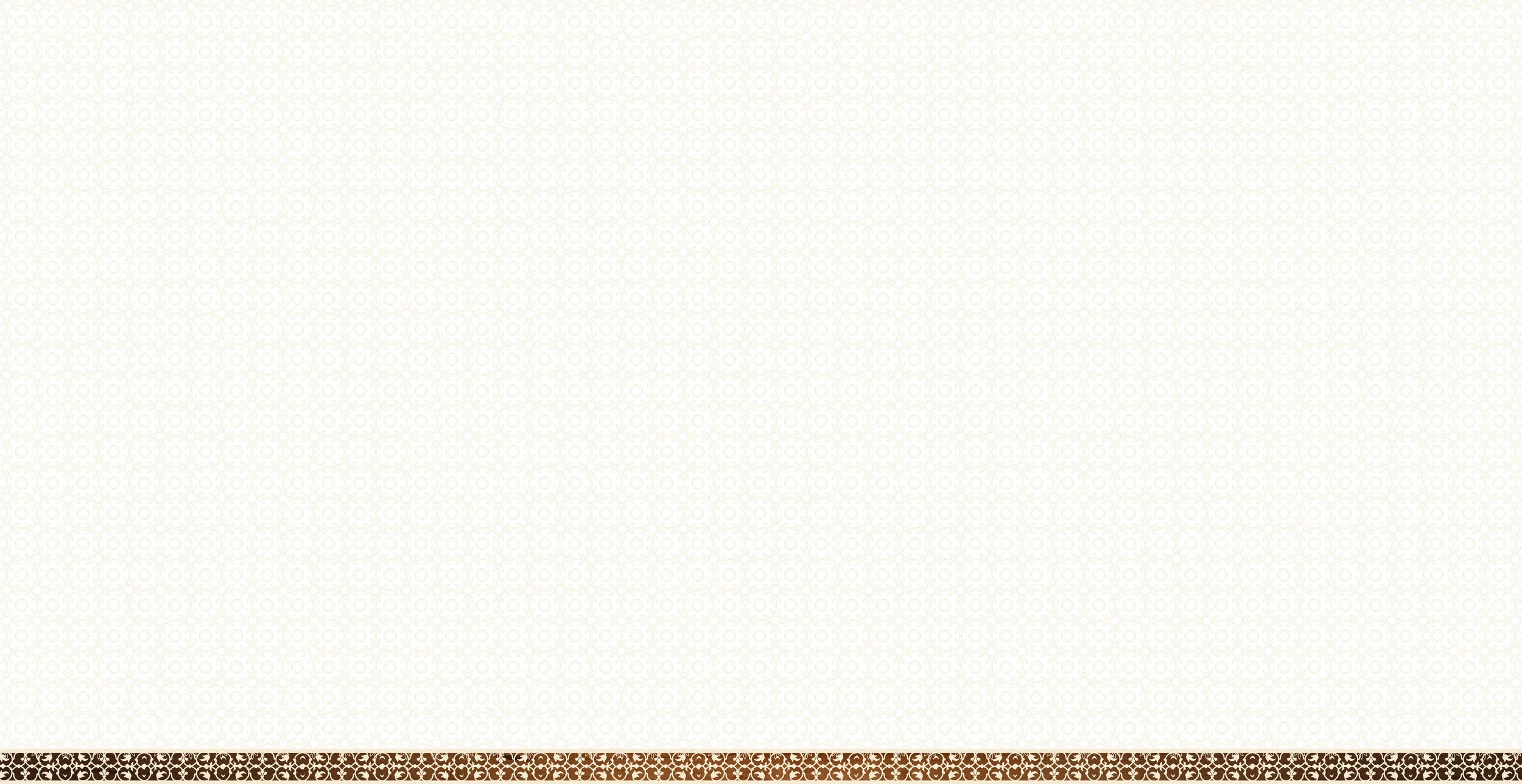

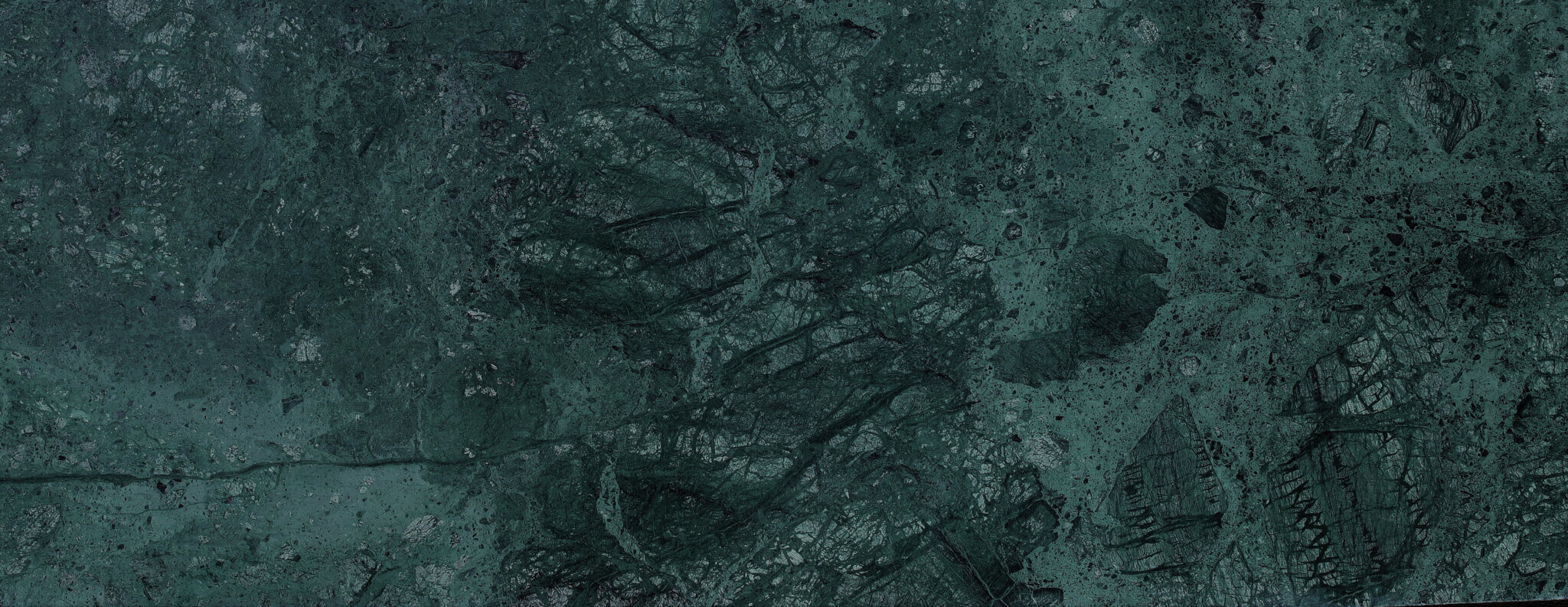
Circling India
India. More a continent than a country, its people are as varied as its landscapes from Himalayan peaks to deserts and rainforests, with people who are blue-eyed with pale skin in the north, to those with jet black skin and hair in the south, and where I was born, in Guwahati, as oriental looking as the Chinese on Indian borders. All Indian. A continent that up to recently was one of the BRIC countries, a rising economic tiger, with the largest middle class in the world and also home to 73 million people living in poverty.
My first memory is of snowfall in Shimla, a town in the Himalayas, when on awakening I saw a flurry of snow and remember my parents bringing me a warm coat. My second memory, is a sports ground in an army battalion watching soldiers clamber up what seemed to be mile-high ropes, my third, of a meeting late prime Minister Indira Gandhi as a child.
My mother, a Muslim aristocrat, and my father, from an established middle-class Hindu family, was an army officer who served in three wars, lived a post-colonial life in officers’ clubs from Calcutta, Bangalore, Shillong, Sagar, to Bangalore Shimla and Chandigarh and created a charmed life that went beyond caste, class home towns, or religion. This is rare in a country of 1.3 billion, 664,369 villages, 400 cities, 3,000 castes and 25,000 sub-castes and 24 religious communities including Hindus, Muslims, Christians Buddhists, and Jains. People from all these walks joined the Indian army, and to communicate with one another, spoke English.
At 17.5 million, The Indian diaspora is one of the largest worldwide. Like my itinerant parents, I belong to many places, my adopted homeland, Trinidad and Tobago and India, which always holds a large chunk of my heart. These columns represent physical, intellectual journeys to India, and in a way, back to my own self, and identity as Trini (citizens of Trinidad and Tobago), who like all Trinis, have roots continents away.
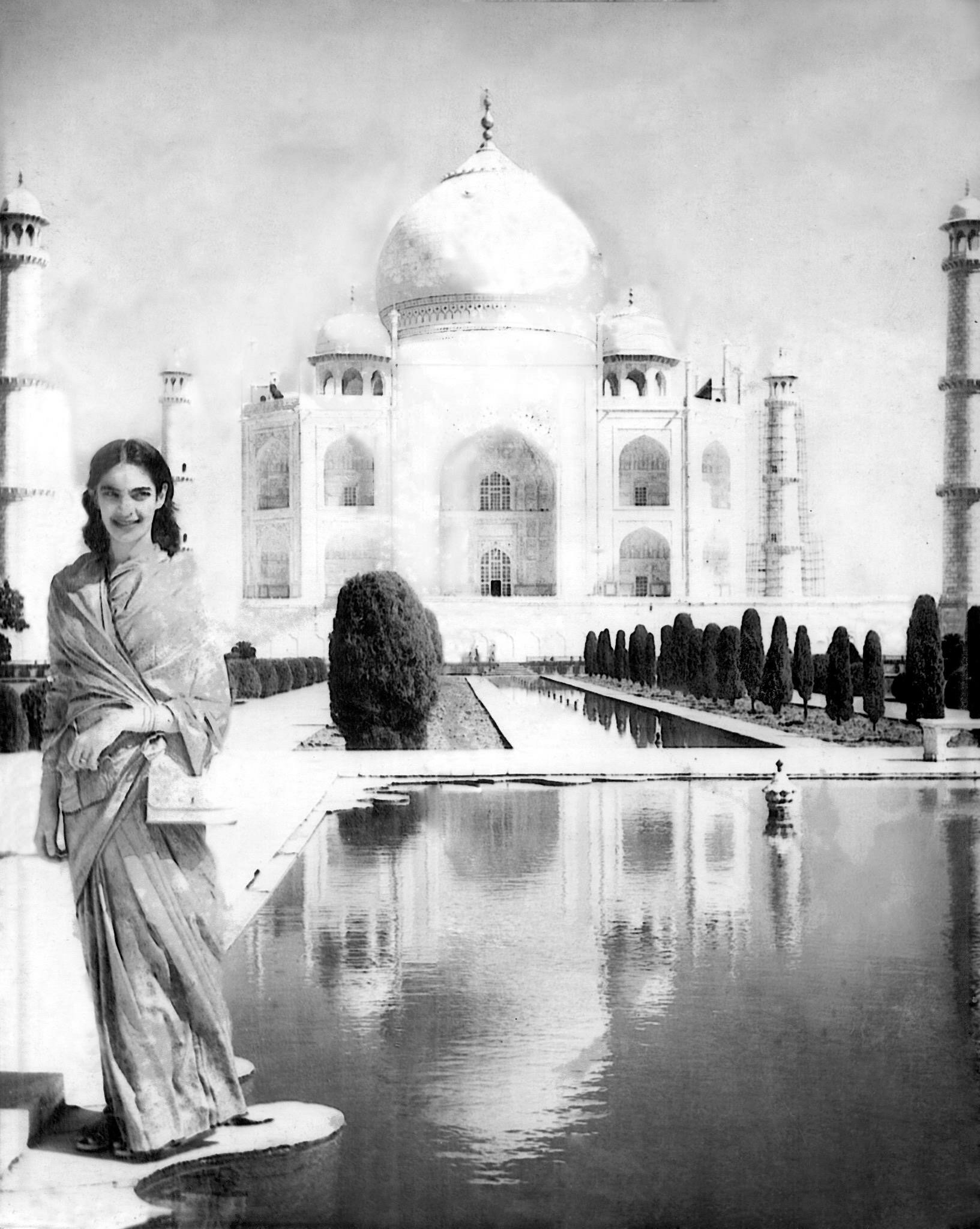
My mother, Anvar Zia Sultana after her marriage standing in front of the Taj Mahal. When I think of India, I think of my mother who is rooted far more in her Sufi philosophy of life than she is in any physical space or material possessions that she was able to let go easily, that of kindness to others. She loves these islands we have now made home, is firmly rooted in the present and rarely looks back.
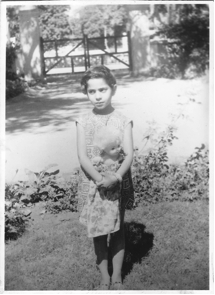
India is my childhood and my first home. Often the sounds, fragrances, landscape, and architecture of continents of the West Indies and East Indies mingle in my mind. Trinidad is my home now, but India will always also be home to my heart, a place that is always elusive, always fascinating, and a place I have introduced to my husband and children and have visited multiple times since our immigration to Trinidad and Tobago, with my parents, and then with my parents, husband and children. My father has taken us everywhere from Guwahati where I was born, to Calcutta, my brothers' birthplace, to Chennai, Delhi, Shimla, Kashmir, Bombay, Bangalore and Bhopal. Here I am in Bangalore with a much-beloved doll.
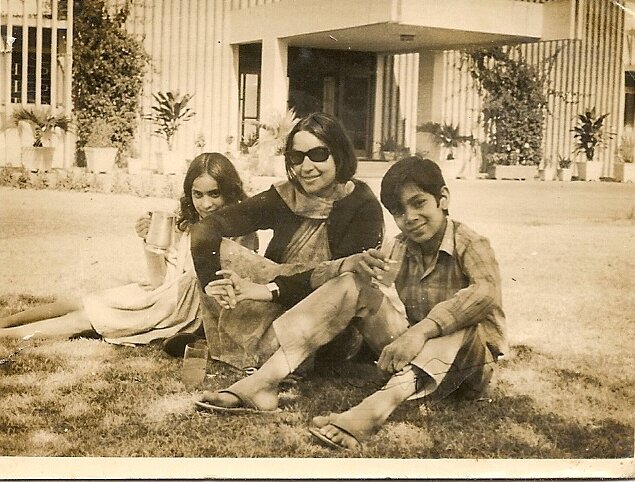
On a warm day in an officer's mess with my mother and brother holding my fathers' beer mug (he's taking the photo) in Bangalore in the late 70's.

I was a precocious child and said to my father once 'Well if you've fought in so many wars surely you can take me to meet the Prime Minister? Someone he got an appointment, and we sat in her rose garden for half an hour with Mrs Indira Gandhi and her young grandson Rahul Gandhi. She was very gracious but a little terrifying. She was India's longest-serving PM, India's iron lady for her two-year state of emergency in India (1995-1997) centralising power, going to war with Pakistan and creating Bangladesh and increasing India's influence to become a regional power of South Asia.

In Delhi with my Trinidadian husband, Imshah Mohammed. My husband's family came to Trinidad over 170 years ago from India to work on the plantations by the European colonial authorities and gradually found their place in the new world filled with opportunities. He deeply respects his Indian origins but culturally sees himself as a proud West Indian, an amalgam of many continents including India.
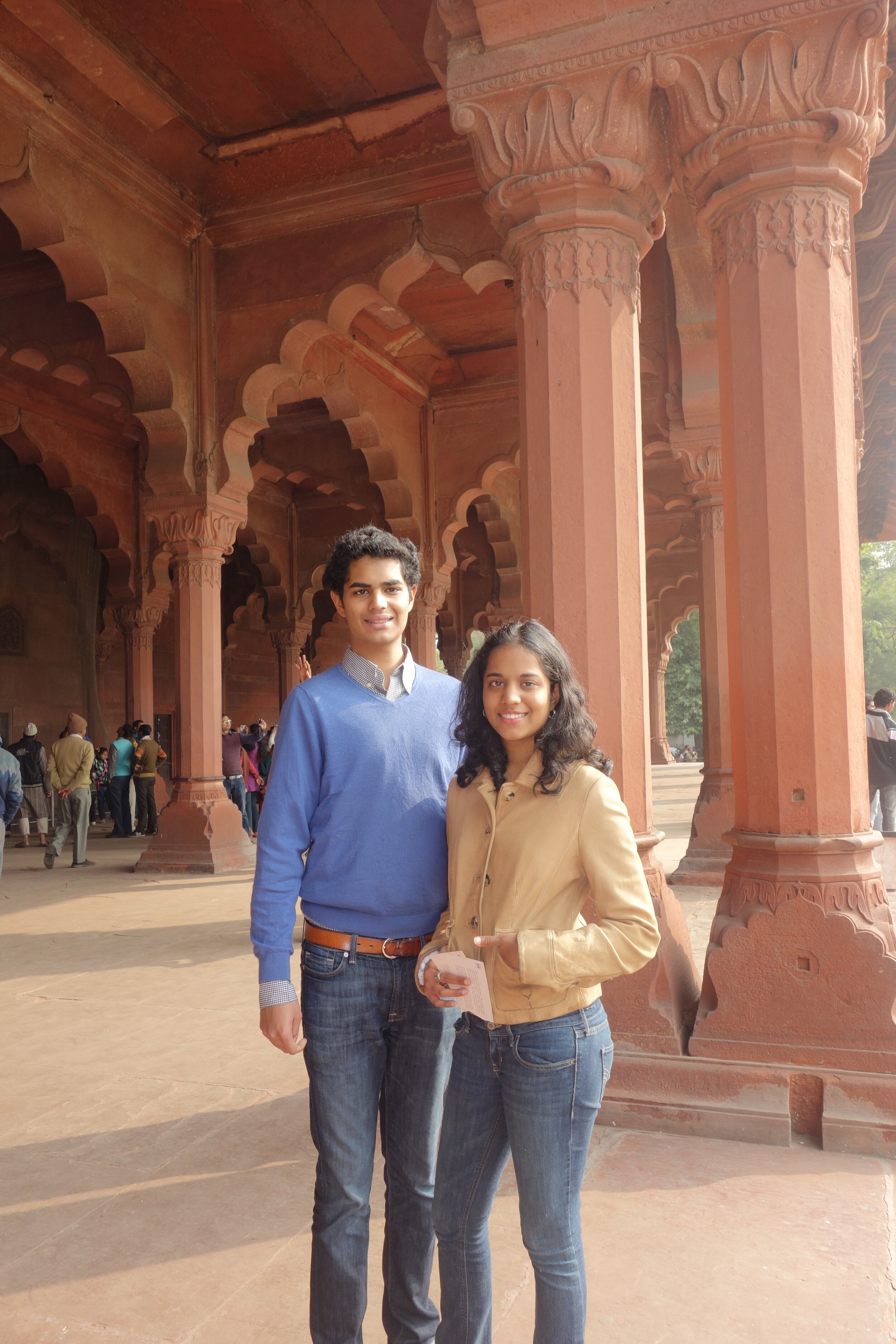
Over the years, I introduced my children (now young adults) Kiran Mathur Mohammed and Anika Mathur Mohammed to an ever-changing and ever-elusive India. Here they are exploring the Red Fort in New Delhi.
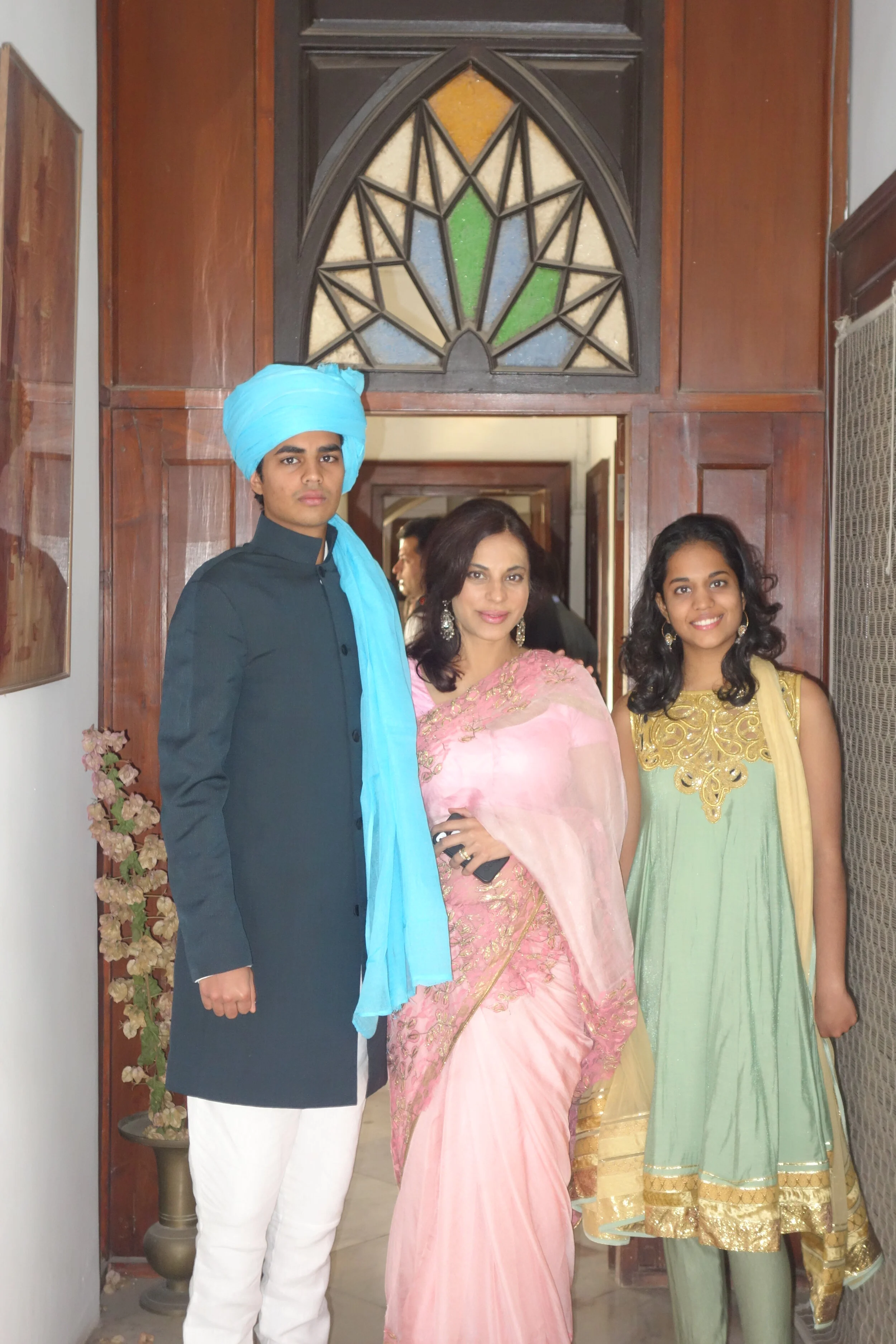
At a family wedding in my mother's ancestral home in Bhopal.
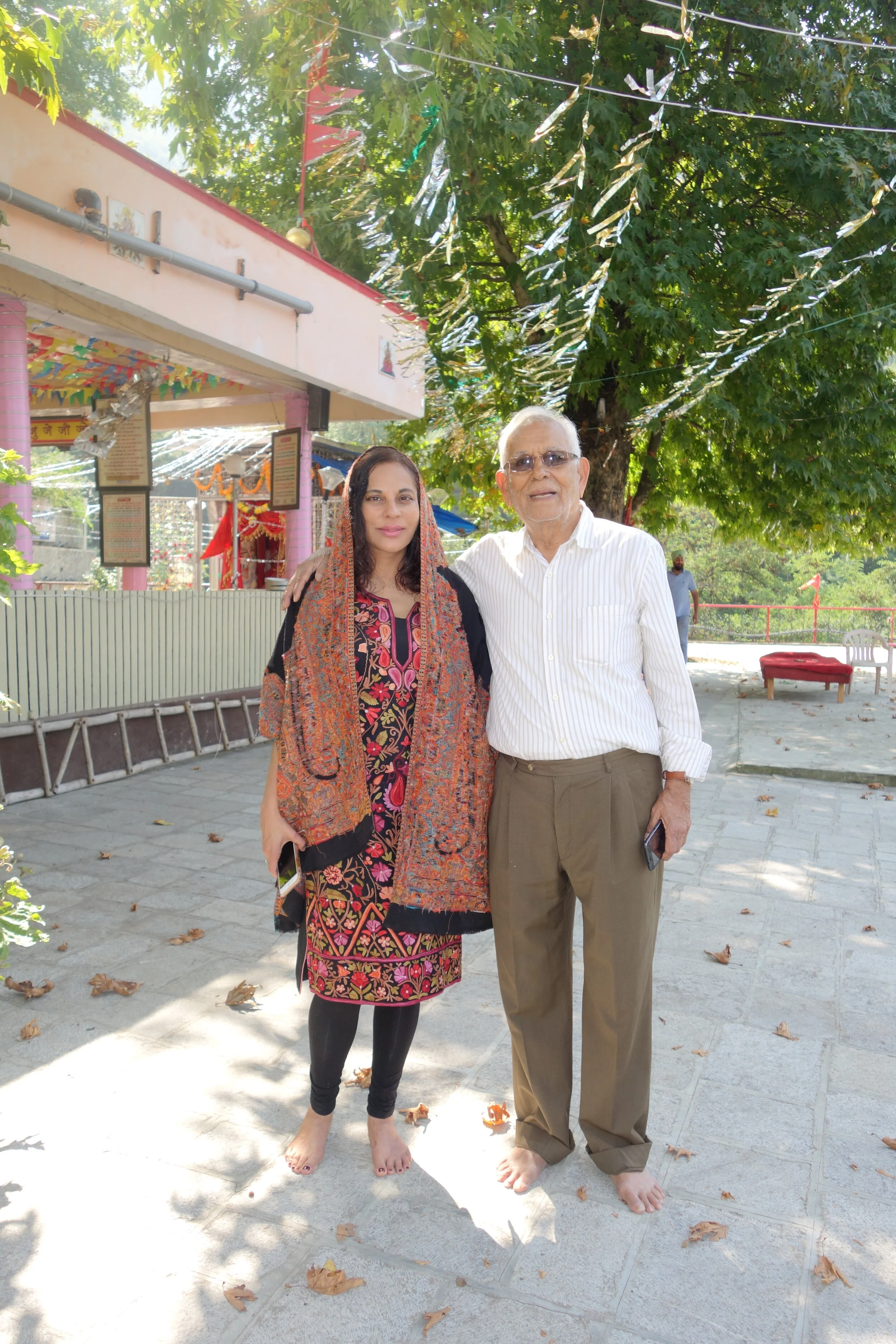
In a temple in Kashmir with my father. In 2019 My father, who flies in the face of fear, planned this trip to Kashmir, 95 per cent Muslim, agitating for home rule, supported by Pakistan. It is an area of unrest, shooting between armies on both sides of the border, curfews, a 700,000-army presence of Indian soldiers and Central Police who have (and regularly use) the powers to arrest, shoot and kill rebels.
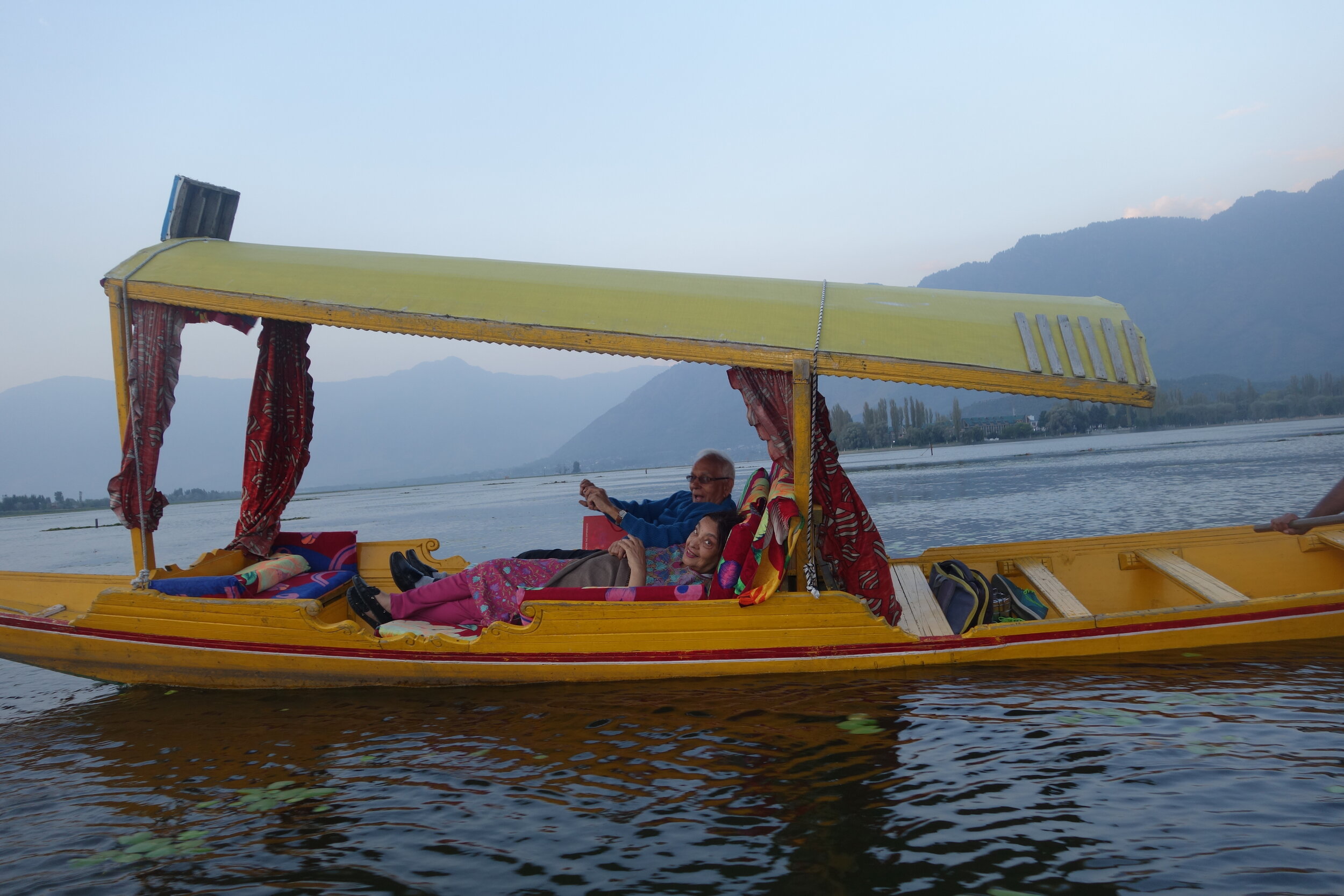
My parents on a houseboat in Srinagar. The last time my father was in Srinagar on a houseboat on the lake with my mother he was called to duty for the Indo Pak war in 1965 to build a bridge and lay down land mines. In 13 days in Punjab, he lived more than people do in a lifetime. He emerged from a battle in the trenches to find amidst dead bodies of Pakistani boys with letters, prayers from their mothers. His jeep was fired at by Pakistani aircraft; his commander and colleagues were killed by shellfire; he dragged a dead colleague out of a river, his wounded driver to safety.